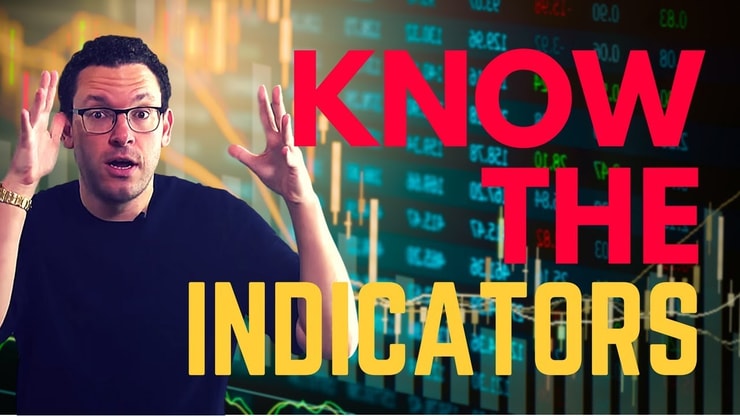In the world of trading, a stock market reversal is a significant change in the price direction of a stock or the market as a whole. This could be an uptrend changing to a downtrend, or vice versa. It’s a pivotal moment for traders, as it can signal a new trading opportunity.
For example, let’s say a stock has been in a steady uptrend, consistently hitting new highs. Suddenly, the momentum shifts, and the stock begins to hit lower lows and lower highs, indicating a reversal into a downtrend. This reversal could be a signal for traders to sell their positions and potentially profit from the change in trend.
Reversal trading strategies involve identifying these turning points and making trades based on new trendlines. These strategies require a keen eye for analysis and a solid understanding of various technical indicators.
But remember — we never predict the market, we react to it.
We’re not investors, we’re traders. Reversal trading is one case we make for shares in a company to move towards our trading plan-specified gain…
If it doesn’t work out, we cut our losses!
This article will cover examples of reversal trading, crossovers and ranges, moving averages and oscillators, and the time frames we’re dealing with. Let’s get to it!
Table of Contents
- 1 What is Stock Reversal Trading?
- 2 Technical Indicators for Reversal Trading
- 3 Types of Reversals in the Stock Market
- 4 Chart Patterns for Identifying Reversals
- 4.1 Candlestick Patterns for Identifying Bullish and Bearish Trends
- 4.2 Trend Lines and Channels in Price Action Trading
- 4.3 Difference Between a Reversal and a Pullback
- 4.4 Identify Trend Reversal — Identify Weakness in the Trending Move
- 4.5 Identify Strength in the Retracement Move
- 4.6 Identify a Break of Support/ Resistance area
- 5 Tips for Managing Risk
- 6 How Do You Distinguish Between Trend Reversal and Retracement?
- 7 How to Identify Reversals
- 8 Key Takeaways
What is Stock Reversal Trading?

2025 Millionaire Media, LLCStock reversal trading is a strategy where traders aim to identify and profit from price reversals in the market. It’s a method that requires a deep understanding of market trends and the ability to analyze various indicators effectively.
One of the key aspects of reversal trading is identifying the points where the market is likely to change direction. These points, known as resistance and support levels, can provide traders with signals for when to enter or exit a trade.
Reversal trading isn’t for everyone. It requires patience, as well as the ability to act quickly when a reversal is identified. It’s a strategy that can yield profits, but it also carries a high level of risk. As with any trading strategy, it’s crucial to manage your risk effectively and never risk more than you can afford to lose.
Reversal trading is just one of many strategies that traders can employ. For a broader perspective on trading strategies, you might want to explore a general day trading strategy. This will provide a more comprehensive understanding of the different approaches you can take in your trading journey.
Benefits of Reversal Day Trading Strategies
Reversal day trading strategies can offer several benefits. For one, they provide traders with the opportunity to profit from both uptrends and downtrends in the market. This flexibility can be a significant advantage, especially in volatile markets where price movements can be substantial.
Another benefit is the potential for high returns. If a trader can accurately predict a reversal, they can position themselves to buy at the bottom of a downtrend or sell at the top of an uptrend, maximizing their potential profit.
However, it’s important to note that reversal trading also comes with risks. The market can often give false signals, and what appears to be a reversal could just be a temporary pullback. Therefore, it’s crucial to use other technical indicators and analysis tools to confirm a reversal before making a trade.
To mitigate these risks, you might want to consider a swing trading strategy, which focuses on capturing short-term trends in the market over a period of a few days to several weeks.
Technical Indicators for Reversal Trading
Technical indicators are essential tools for any trader, especially those employing reversal trading strategies. They can help identify potential reversal points and provide signals for when to enter or exit a trade.
However, technical indicators alone may not be enough to ensure successful trades. News and market conditions, for example, can lead to price gaps. For this, a gap trading strategy can be a valuable addition to your trading toolkit.
Price Trend
The price trend is one of the most basic indicators of a potential reversal. If a stock’s price has been consistently moving in one direction and then starts to move in the opposite direction, this could signal a reversal. However, it’s important not to rely solely on this indicator, as price trends can often be misleading.
More Breaking News
- Why Did BMNR Surge So Much?
- ENDRA’s TAEUS Advancement: A New Era in Liver Imaging?
- Albemarle’s Stock Value Adjustments Amid Analyst Reevaluations
Potential Reversal Levels
Potential reversal levels, often identified by support and resistance lines, are another crucial indicator. These are the price levels at which a stock has historically had difficulty moving beyond. If a stock’s price reaches one of these levels and then starts to move in the opposite direction, this could signal a potential reversal.
Bollinger Bands
Bollinger Bands are a popular technical analysis tool used to identify potential reversal points. When the price of a stock reaches the upper or lower band, it could indicate that the stock is overbought or oversold, respectively, and a reversal may be imminent.
Price Movement
Analyzing the overall price movement can also provide clues about potential reversals. For instance, if a stock’s price begins to make lower highs and lower lows, this could indicate a reversal from an uptrend to a downtrend.
False Signals
It’s important to be aware of false signals when using technical indicators. These occur when an indicator suggests a reversal, but the price does not actually change direction. To avoid falling for false signals, traders should use a combination of indicators and not rely on any single one.
Swing Lows and Highs
Swing lows and highs can also be used to identify potential reversals. A swing low is a price point that is lower than the points immediately before and after it, while a swing high is a price point that is higher. If a stock’s price begins to make higher lows and higher highs, this could indicate a reversal from a downtrend to an uptrend.
Types of Reversals in the Stock Market

2025 Millionaire Media, LLCThere are two main types of reversals in the stock market: bullish and bearish.
Bullish Reversals
A bullish reversal occurs when the price of a stock or the market as a whole changes direction from a downtrend to an uptrend. This can present a buying opportunity for traders, as the price is expected to rise.
Bearish Reversals
Conversely, a bearish reversal occurs when the price changes direction from an uptrend to a downtrend. This can present a selling opportunity, as the price is expected to fall.
Chart Patterns for Identifying Reversals
Chart patterns play a crucial role in identifying potential reversals. They provide visual representations of price movements and can help traders predict future price directions.
Candlestick Patterns for Identifying Bullish and Bearish Trends
Candlestick patterns are a popular tool for identifying potential bullish and bearish reversals. For instance, a ‘hammer’ or ‘doji’ can indicate a potential bullish reversal, while a ‘shooting star’ or ‘hanging man’ can signal a potential bearish reversal.
Trend Lines and Channels in Price Action Trading
Trend lines and channels are another useful tool for identifying potential reversals. An upward trend line is drawn by connecting the swing lows of a price, while a downward trend line is drawn by connecting the swing highs. A break in these trend lines can signal a potential reversal.
Difference Between a Reversal and a Pullback
Understanding the difference between a reversal and a pullback is crucial for successful trading. A pullback is a temporary pause in the prevailing trend, while a reversal is a significant change in the price direction.
Identify Trend Reversal — Identify Weakness in the Trending Move
Identifying a trend reversal involves spotting weakness in the trending move. This could be a slowdown in the momentum, a decrease in trading volume, or a break in the trend line.
The head and shoulders pattern is a popular sign of asset weakness.
Identify Strength in the Retracement Move
Similarly, identifying strength in the retracement move can also signal a potential reversal. This could be an increase in trading volume during the retracement, a rapid price change, or a break in the trend line.
Identify a Break of Support/ Resistance area
A break of a support or resistance area can also signal a potential reversal. If the price breaks through a support level, it could indicate a bearish reversal, while a break through a resistance level could signal a bullish reversal.
Tips for Managing Risk

2025 Millionaire Media, LLCRisk management is a crucial aspect of any trading strategy, including reversal trading. Here are a few tips for managing risk:
Set Stop Losses: Stop losses can protect you from significant losses by automatically selling your position if the price reaches a certain level.
I use manual stop losses for stocks I trade. The reason for this? I work with signs of price movement — Level II data for example — not just the results after the fact.
Use Limit Orders: Limit orders allow you to specify the maximum price you’re willing to pay when buying, or the minimum price you’re willing to accept when selling.
Don’t Risk More Than You Can Afford to Lose: This is a golden rule in trading. Always ensure that you’re not risking more money than you can afford to lose.
How Do You Distinguish Between Trend Reversal and Retracement?
Distinguishing between a trend reversal and a retracement can be challenging, but it’s crucial for successful trading. A retracement is a temporary pause in the prevailing trend, while a reversal is a significant change in the price direction.
One way to distinguish between the two is by using technical indicators like the Relative Strength Index (RSI) or Moving Average Convergence Divergence (MACD). These can help identify whether the price movement is likely to be a temporary retracement or a more significant reversal.
How to Identify Reversals
Identifying reversals is what reversal trading is all about. Here are a few techniques that can help:
Bounce Failure in Trend Line
A bounce failure in a trend line can signal a potential reversal. If the price fails to bounce off a trend line as expected, it could indicate that the trend is weakening and a reversal may be imminent.
Pullback or Retracement
A pullback or retracement can often precede a reversal. If the price retraces but fails to continue in the direction of the prevailing trend, it could signal a potential reversal.
Trend Waves
Analyzing trend waves can also help identify potential reversals. In an uptrend, each successive wave should reach a higher high and a higher low. In a downtrend, each wave should reach a lower low and a lower high. If this pattern is broken, it could signal a potential reversal.
Trend Structure Change
A change in the structure of the trend can also signal a potential reversal. For instance, if a stock’s price begins to make lower highs and lower lows, this could indicate a reversal from an uptrend to a downtrend.
Cross-Check with Current Events
Finally, it’s always a good idea to cross-check your analysis with current events. News and events can have a significant impact on stock prices and can often trigger reversals.
Key Takeaways

2025 Millionaire Media, LLCReversal trading is a strategy that involves identifying and profiting from changes in the direction of a stock’s price. It requires a deep understanding of market trends and the ability to analyze various technical indicators effectively.
While reversal trading can be profitable, it also comes with risks. The market can often give false signals, and what appears to be a reversal could just be a temporary pullback. Therefore, it’s crucial to use other technical indicators and analysis tools to confirm a reversal before making a trade.
It isn’t a silver bullet for your trading plan — but reversal trading is one of many strategies you should learn as part of your trading education!
Trading isn’t rocket science. It’s a skillset you build and work on like any other. Trading has changed my life, and I think this way of life should be open to more people…
I’ve built my Trading Challenge to pass on the things I had to learn for myself. It’s the kind of community that I wish I had when I was starting out.
We don’t accept everyone. If you’re up for the challenge — I want to hear from you.
Apply to the Trading Challenge here.
Trading is a battlefield. The more knowledge you have, the better prepared you’ll be.
Have you tried reversal trading? Let me know in the comments — I love hearing from my readers!











Leave a reply